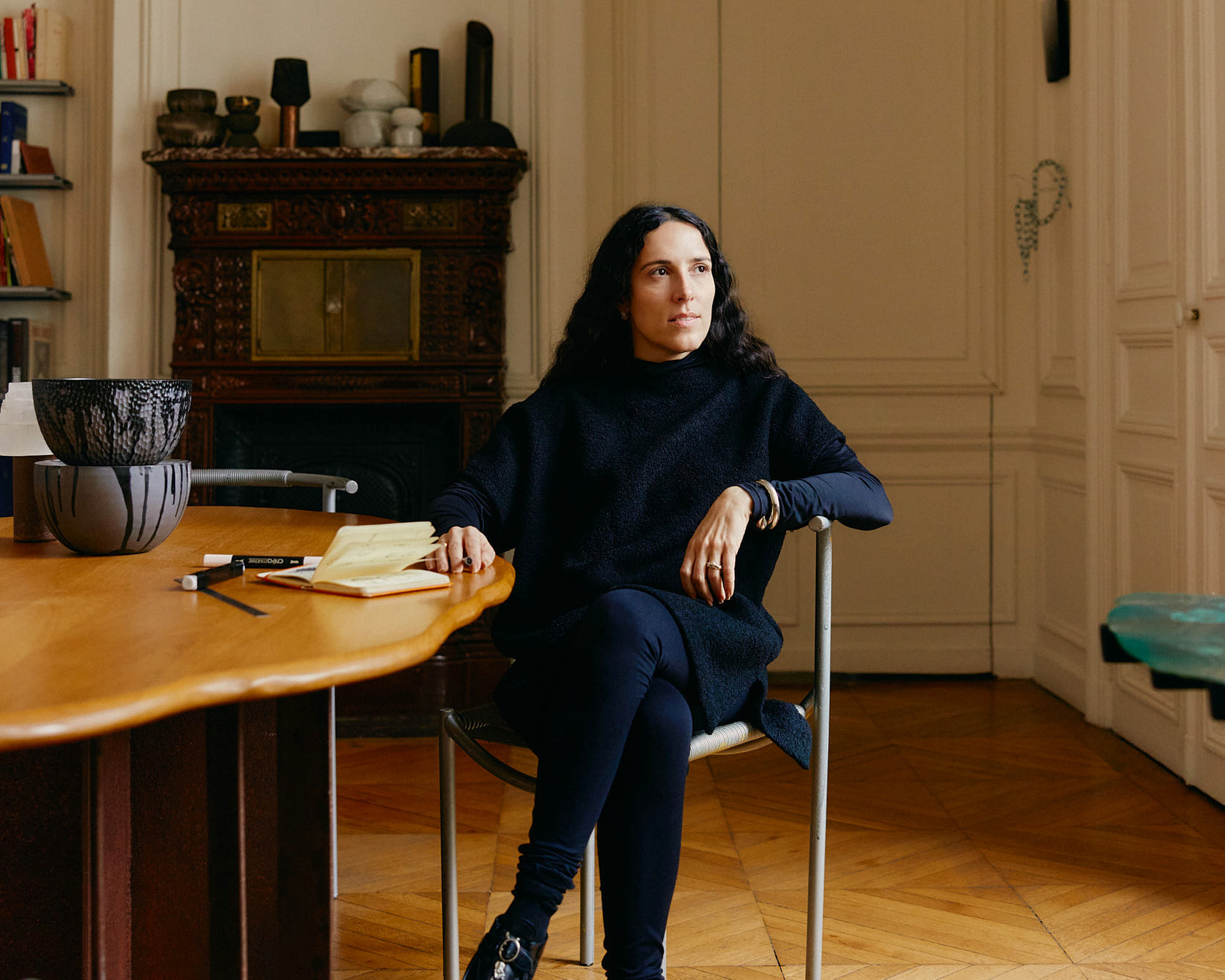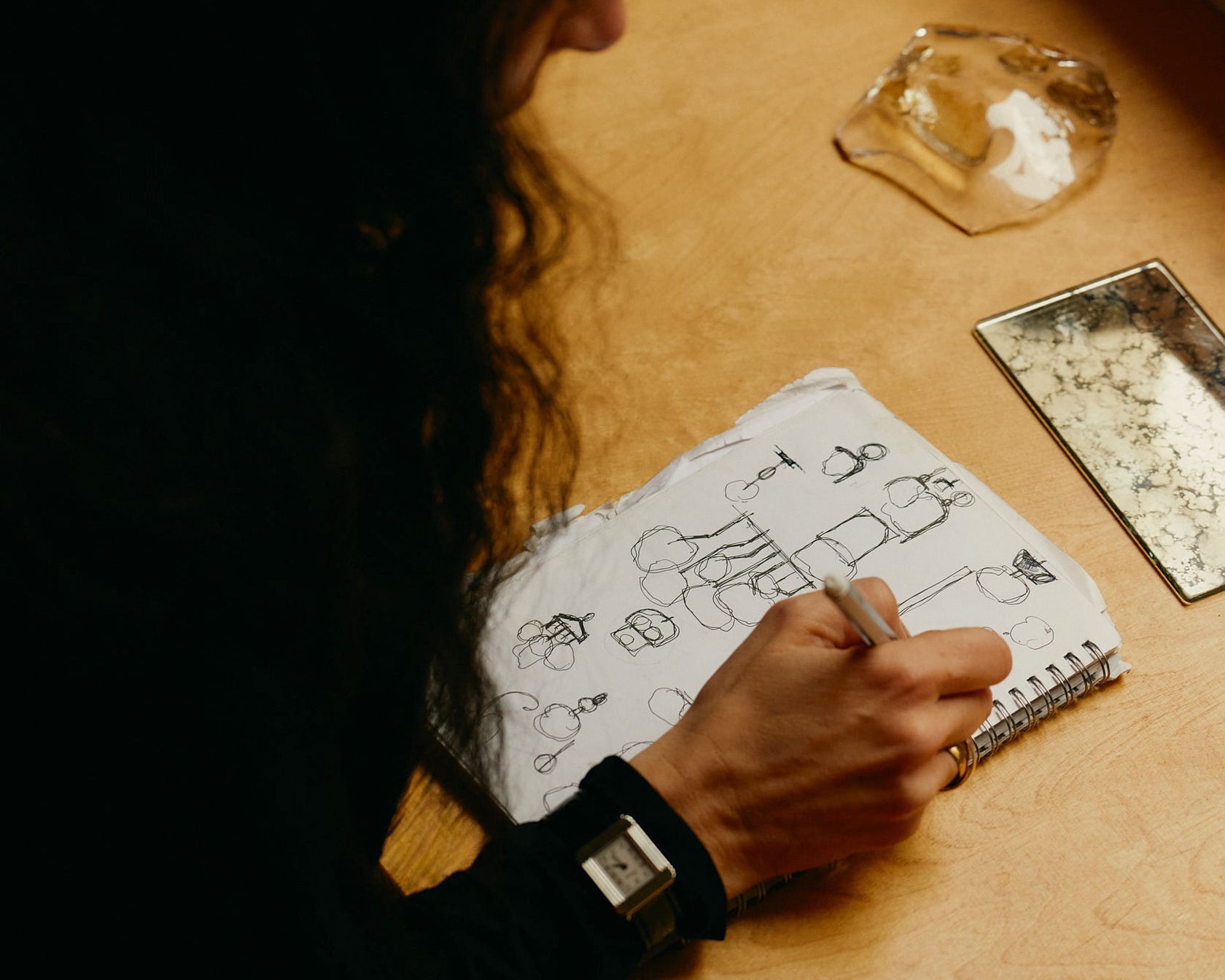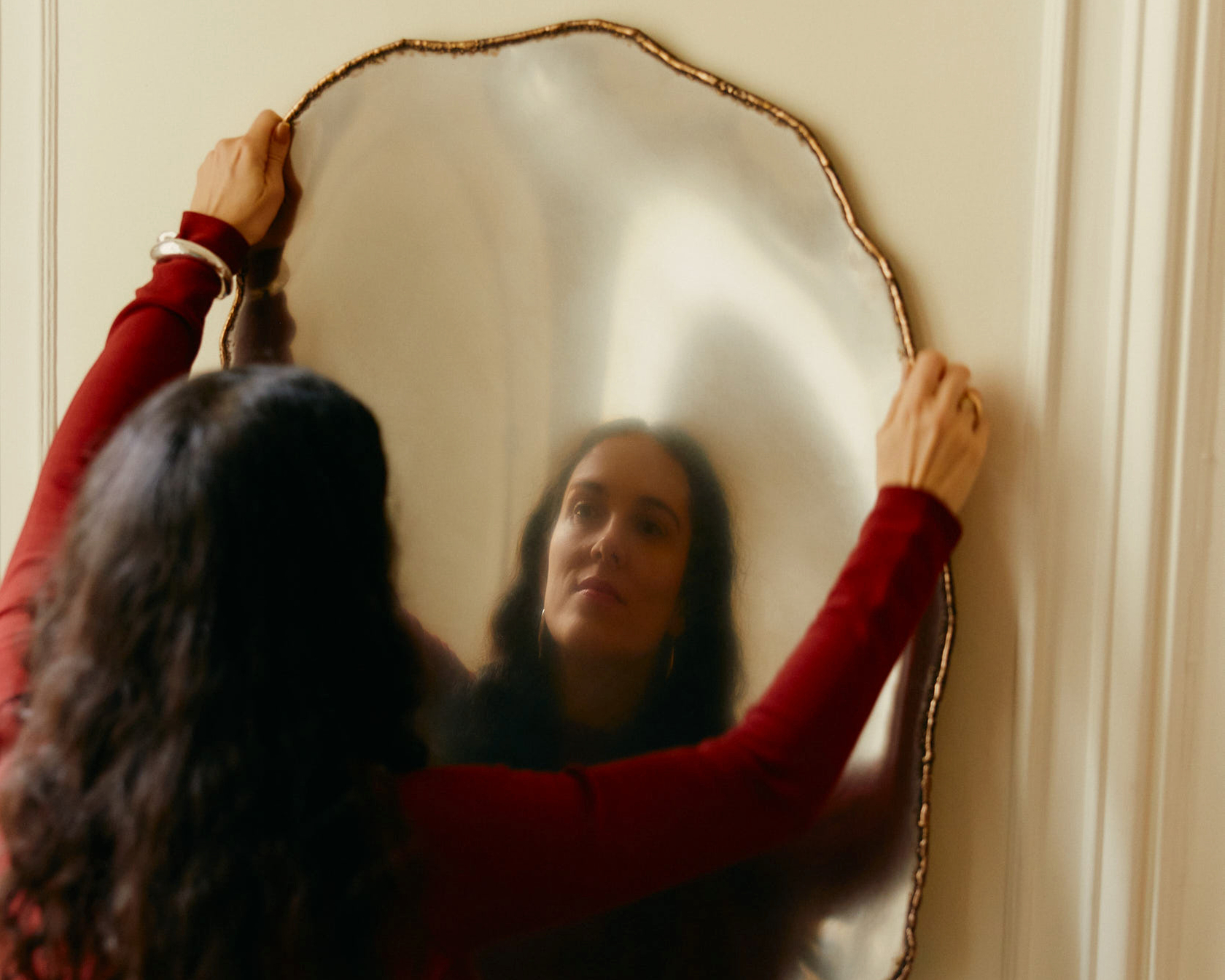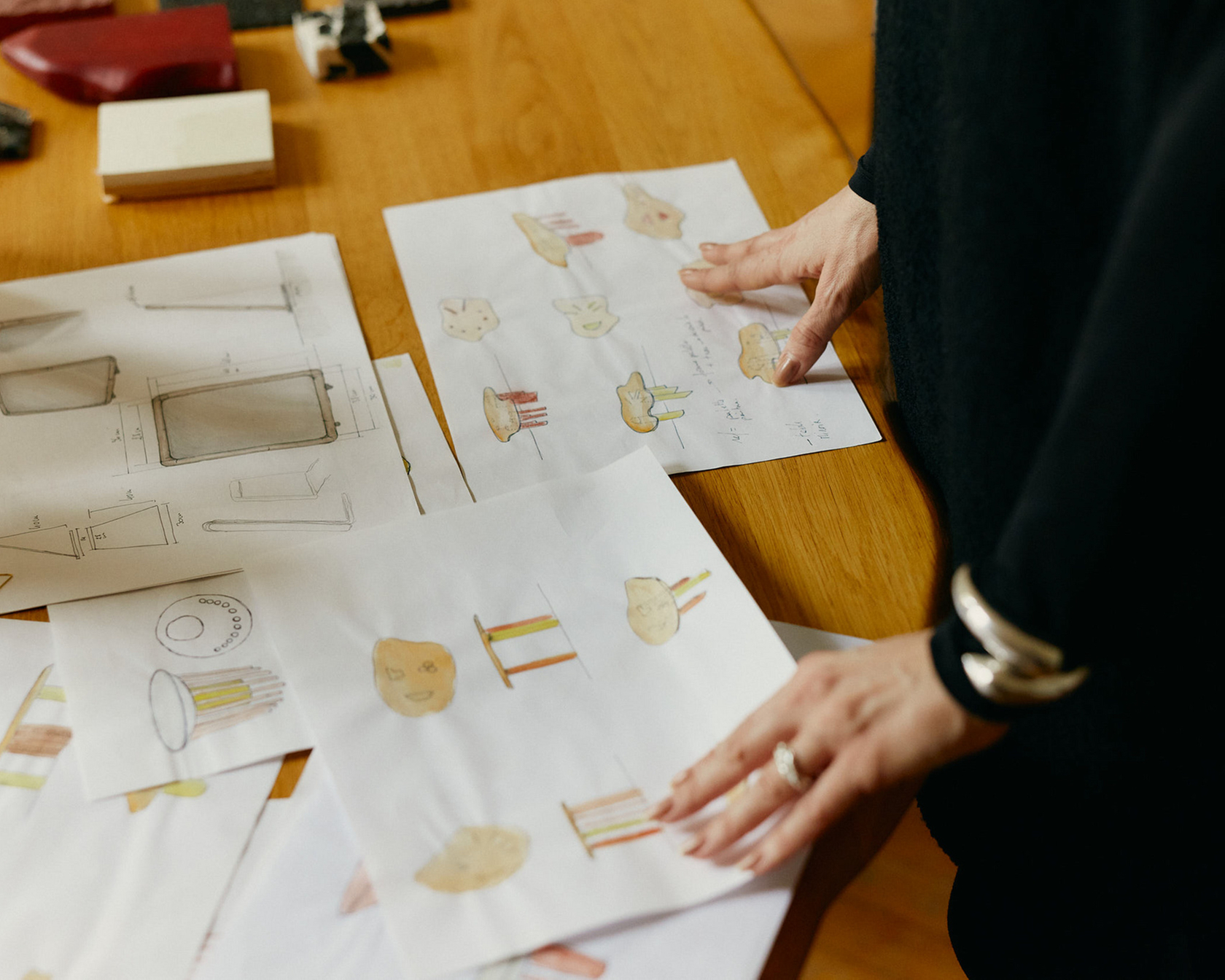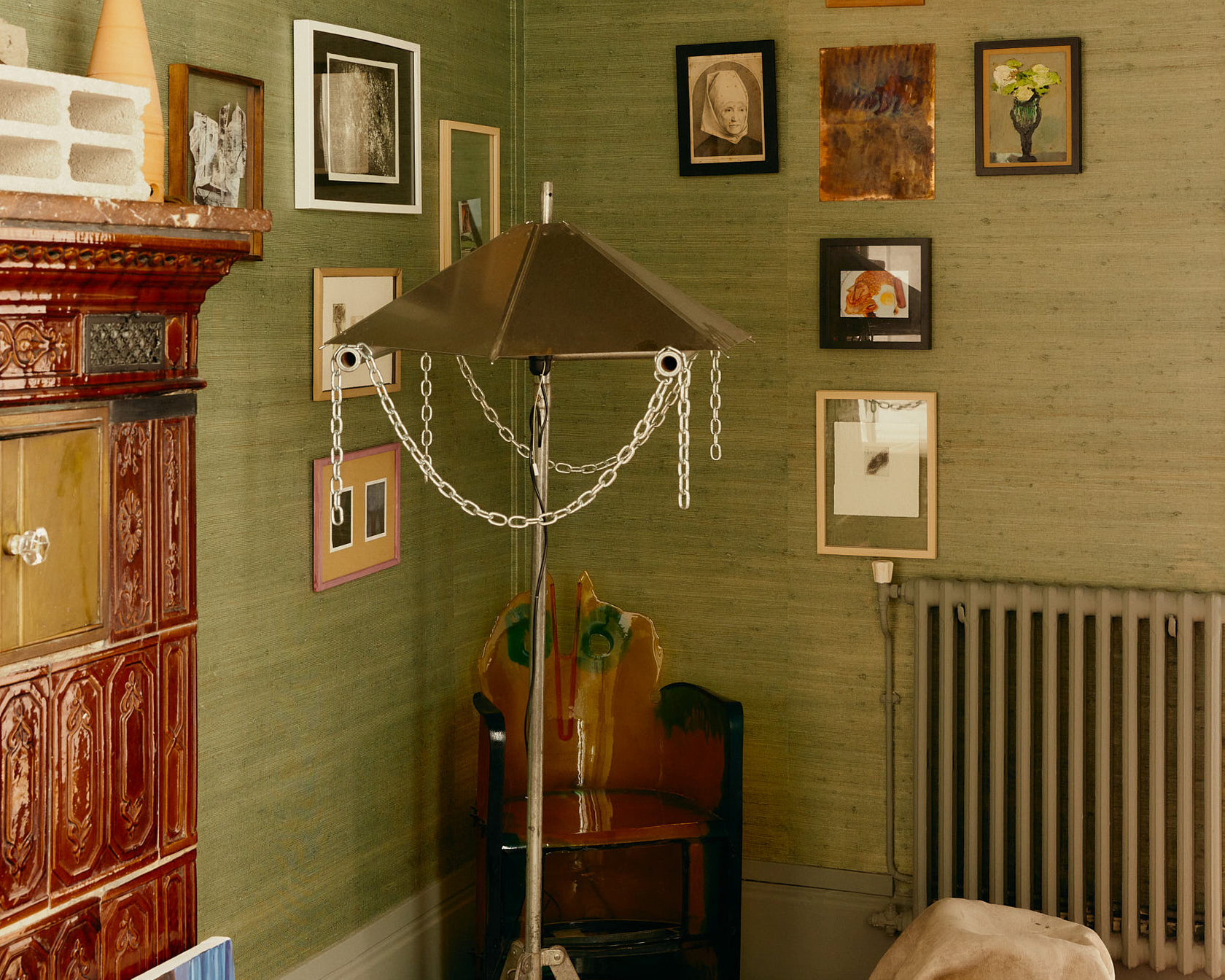Даніель Пендер: Раніше ви казали про те, що в юності хотіли працювати руками. Що в цьому відчутті та процесі вам запам'яталося найбільше?
Софі Дріс: Кумедна історія — я ніколи насправді й не планувала стати архітектором! У дитинстві я захоплювався хімією та археологією. Не було очевидно, що я займуся дизайном, але, озираючись назад, я розумію, як ці ранні зацікавлення ще й зараз впливають на мою роботу. Коли я в майстерні, працюю зі склом або керамікою, то це дуже подібно до хімічних експериментів — змішування матеріалів, нагрівання та спостереження за їхніми перетвореннями. А ось моя любов до археології пов'язана з моєю одержимістю чистими органічними формами. Зараз, коли приїжджаю на острів Мурано та спостерігаю за тим, як розплавлене скло змінює стан через вогонь та різні процеси, то все ще бачу магію в цьому. Саме це є головним стимулом у моїй роботі — експериментування, використання матеріалів у несподіваний спосіб, пошук нових текстур та поєднань. Я люблю працювати з матеріалами, які зовсім необов'язково призначені одне для одного.
Мені подобається, що ви говорите про експерименти та як це впливає на ваш робочий процес, і не починаєте розповідь з кінцевого результату.
Усі завжди починається з походу до майстерні. Я спостерігаю за роботою майстра й мене охоплює допитливість. Я питаю себе: «А якщо ми спробуємо?» Ми починаємо з проб, різних варіантів ідей, і лише потім складаємо думку про остаточну функцію чи форму. Це напрочуд органічний процес.
З ким ви працювали останнім часом?
Я працювала зі склярами на острові Мурано, експериментувала з включенням мінералів у скло. Я обожнюю мінерали — це мій зв'язок з археологією та геологією. Адже це природні дива й вони зачаровують до нестями. Саме зараз я також експериментую з металами. Нещодавно в Нью-Йорку я представила серію дзеркал, виготовлених з полірованої неіржавної сталі в рамі з бронзовим зварюванням. Мені несамовито подобається ідея показувати шрами або те, що зазвичай приховують чи стирають, намагаючись прикрасити.
Це насправді свіжий погляд, адже таким чином ви сприймаєте недосконалість та несподіване як належне.
Саме так, на мою думку, досконалі речі не завжди найкрасивіші. Надто в дизайні, де так багато речей стають предметом масового виробництва, люди прагнуть унікальності, — об’єктів, які закарбували в собі почуття таємниці та мають відбиток особистості, що їх створила. Працюючи над житловими проєктами, мені подобається розповідати клієнтам, чому недосконалість є такою цінною. Предмет ручної роботи має душу, він не подібний до того, що штампують на комп'ютері.

